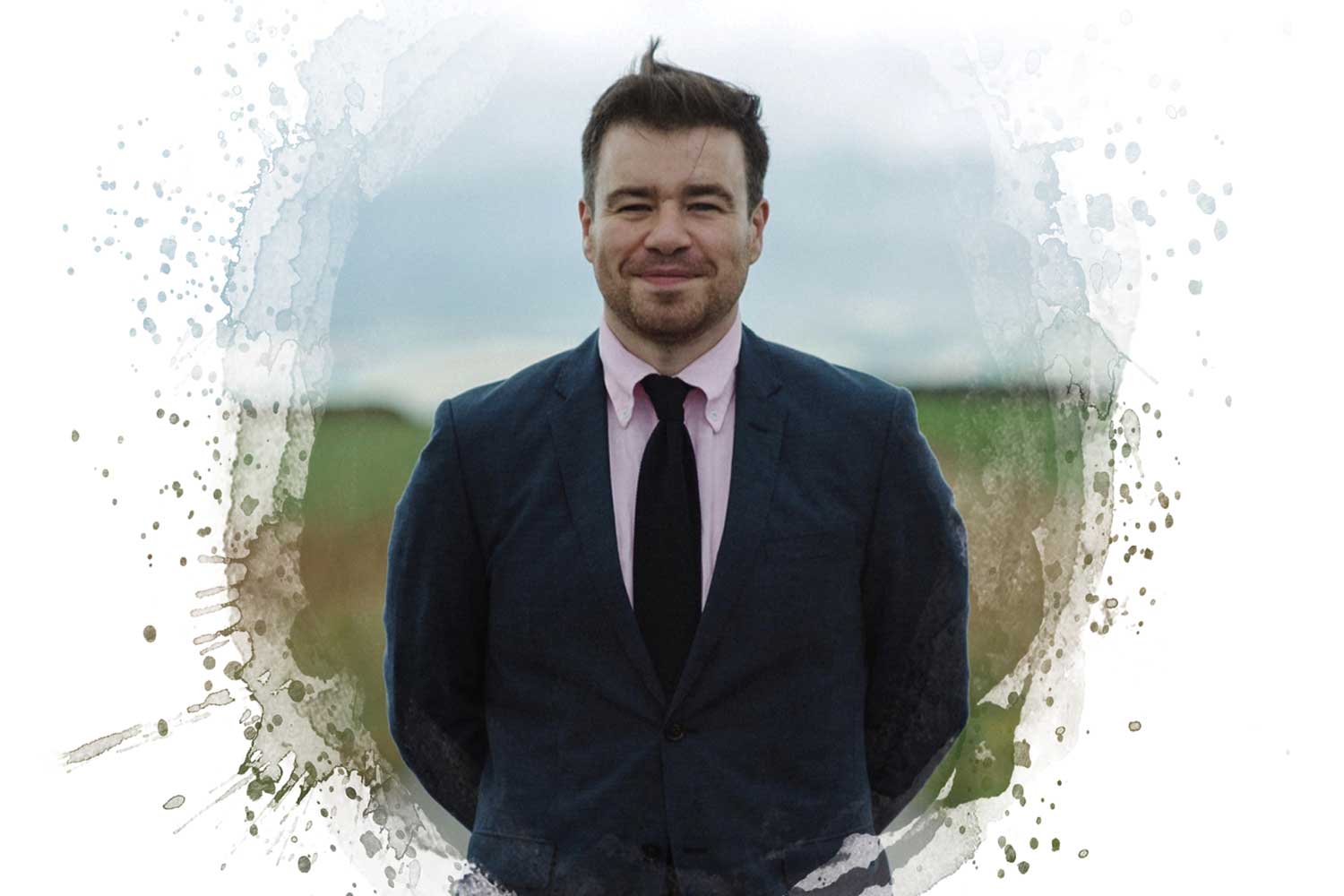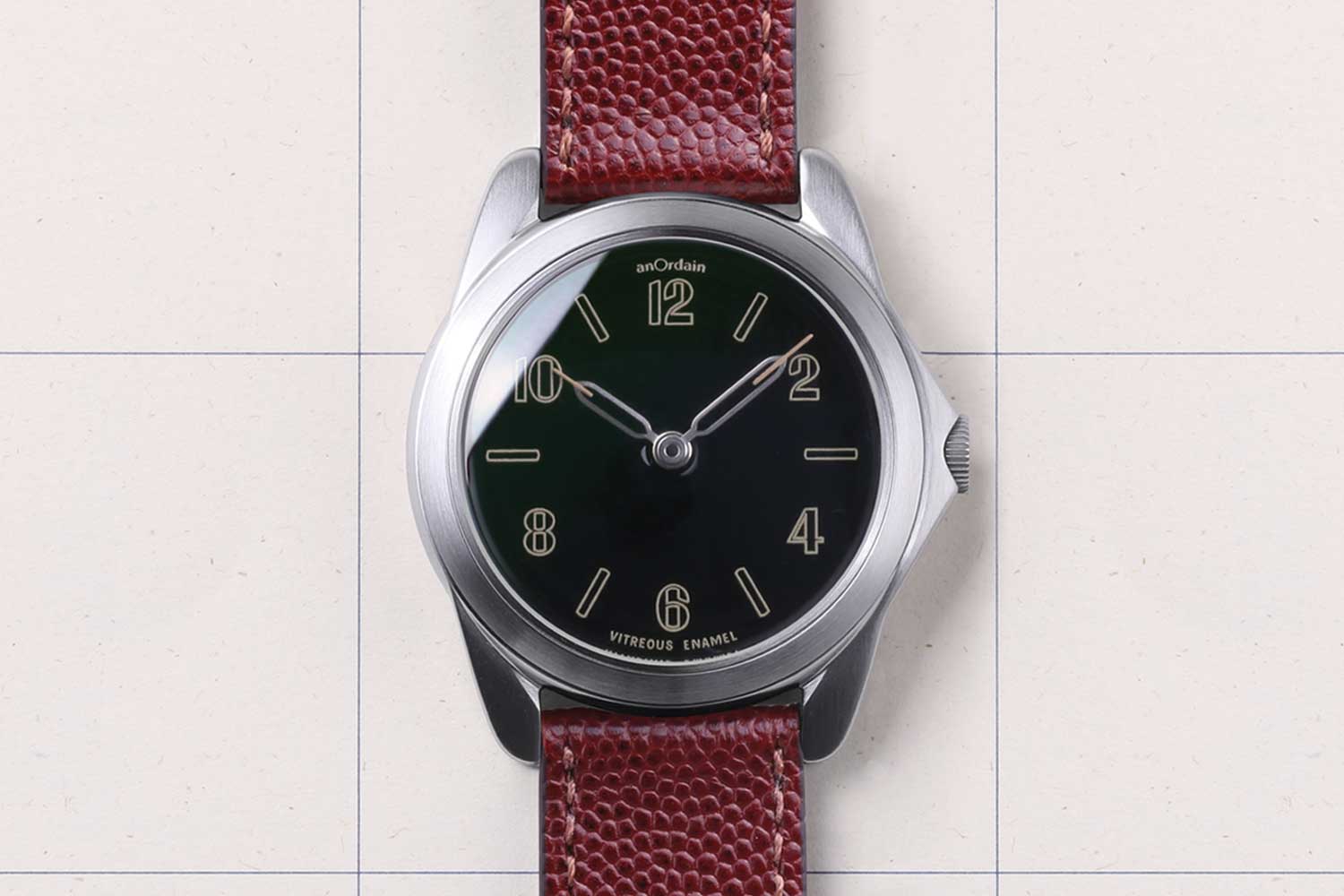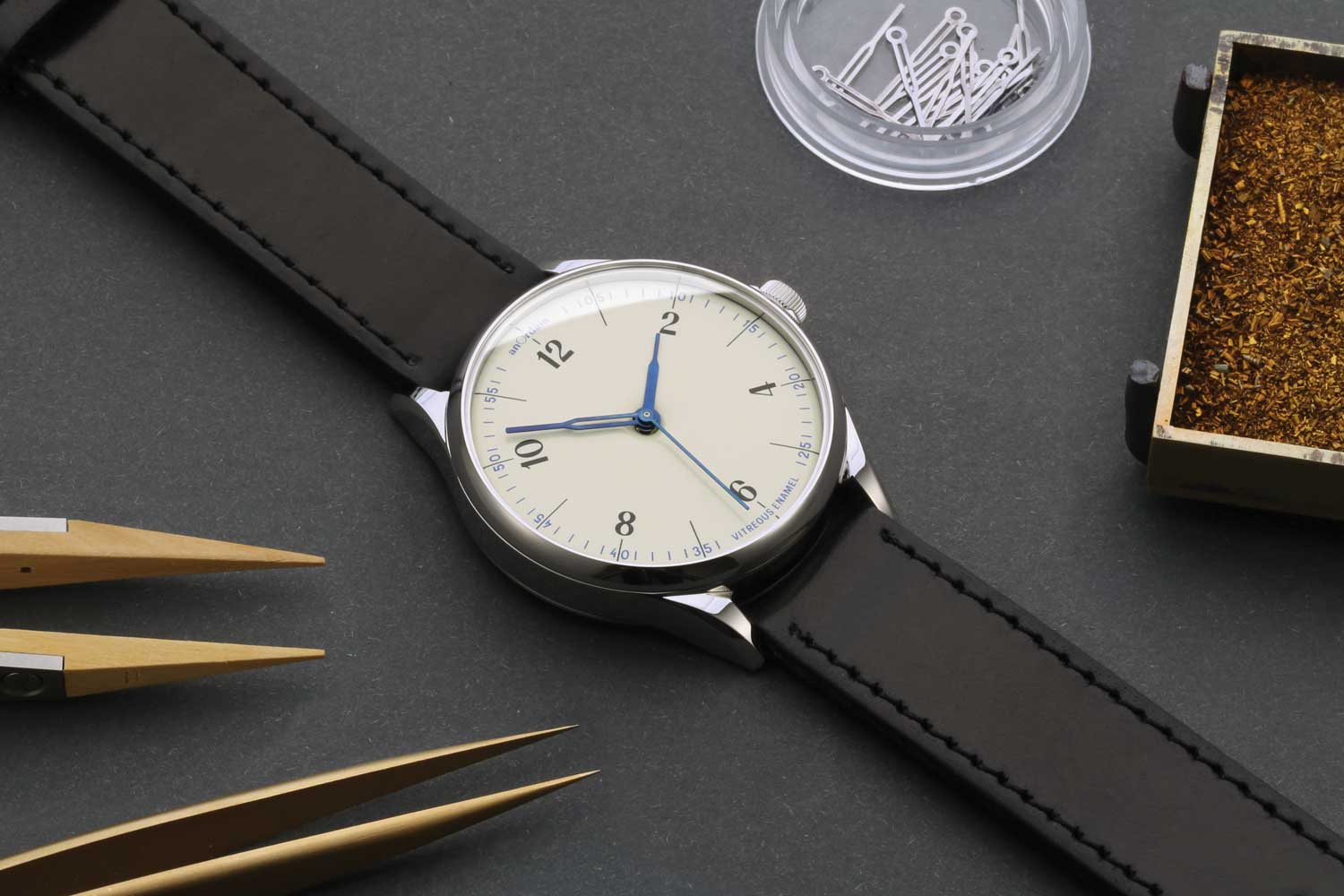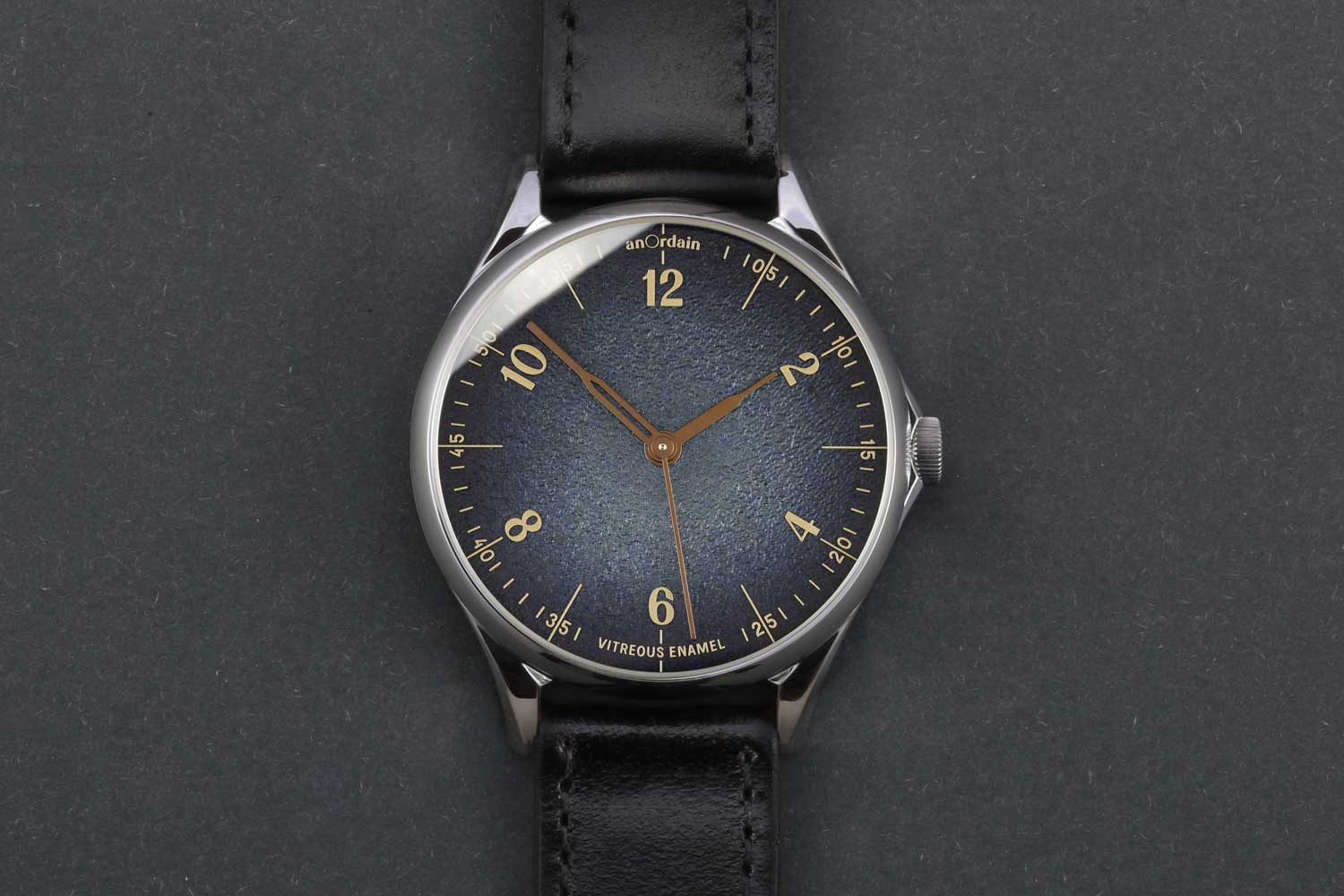anOrdain
Cool Britannia: anOrdain
anOrdain
Cool Britannia: anOrdain
anOrdain
“We’re known for enamel, and perhaps inventing the fumé enamel technique, but for me, weʼre about the fusion of design and craft, and our work in enamel is a product of that, as pretentious as that may sound!”
– Lewis Heath, Founder of anOrdain

Lewis Heath, Founder of anOrdain
What is your first watch-related memory in life?
My parents wore very simple black and white Swatches. Dad was always conscious of making others feel uncomfortable through shows of wealth. He worked as a doctor and spent his days treating people from a range of backgrounds, a lot being ex-miners from the Welsh valleys. He always valued quality and functionality but wasn’t one for flashiness!
Was the setting up of the brand always your plan? Did it happen by accident or was it just “meant to be”?
It was therapy if I’m being honest! I’d built a consumer electronics brand after leaving art school, and as it grew (there were 60 people when I left, and it’s now been bought by Sonos) the bits I loved — design, experimentation, creative freedom — were all swamped a little, and so I set up anOrdain as a side project. Launching or commercializing it wasn’t terribly appealing or feasible for some time due to the difficulty of what we were doing, but I kept at it because it kept me sane. It was constant problem-solving and creating, and those are the bits I love. I left the old company a few years later because I knew anOrdain is what I want to do, but I think those early years of not having any financial goals or having to factor in selling or making money did set us up well in many respects.

The Model 2 Midnight Green mixes rugged pragmatism with contemporary design. Lewis’ personal watch is fitted with a pin grain mahogany kid strap
Tell us about the early days of running the brand.
It’s been a process of constant learning and growing. When you manufacture yourself there’s a huge learning gap to overcome, whereas if you’re working with a white label partner and just doing the design or even the assembly, that eases you in nicely. So, we really were starting from nothing, and it was a very, very slow way of doing it. But we learned so much, and I think now we’ve got a far more thorough knowledge when it comes to design than we would otherwise have.
What is the current setup at anOrdain?
We’re in our fourth workshop now. As we have been gradually acquiring people and machines, we were outgrowing our spaces. Our current accommodation is a series of five units in the East End of Glasgow. Out of a team of now 18 of us, about 70 percent are focused on production. Back in 2014, there was myself and one full time enameler whom I’d hired from the local art school to try and work out dial enameling. Between then and now, we’ve managed to gain a huge amount of knowledge and skill, although that is very much ongoing. We’ve just submitted plans for a purpose-built factory in Glasgow’s Southside, which will be a huge jump up for us and allow us to grow larger than I think we’ll want to, as well as bring in more machinery to help with movement and case making.

The anOrdain Model 1 Iron Cream with Glasgow-made vitreous enamel dial and heat-treated hands
What was the biggest challenge you faced when setting the brand up?
Starting a brand selling watches is one thing, starting one making them is a completely different thing. Our challenges were all about people and knowledge, and the fact that the only watchmakers in Scotland, and really the UK, were servicing watches, and that’s a different bag from making them. So, along with the more obvious challenges in learning to enamel, we also needed to establish a watchmaking side, and that was difficult.
What has been the biggest lesson that you’ve learned?
My approach is to bring in people who are better than me, and so I’ve assembled a wonderful team, and they will make more of ideas than I ever could alone. I have a background in design, and that’s helpful, but I think being self-critical and bringing together brilliant people rather than trying to do it all yourself would be a big lesson.

The anOrdain Model 1 with Glasgow- made fumé enamel dial, seen here in Payne's Gray. anOrdain developed this painstaking technique over several years, refining it recently to exaggerate its smoky effect and add more depth to the outer perimeter
What has been your biggest achievement?
Establishing a sustainable watch company doing meaningful manufacturing in the UK with a bright future! That’s what it comes down to for me.
Who inspires you?
We try not to look at other watch companies too much. There’s some lovely stuff out there, but you take it in, and it can come out subconsciously when you’re designing. A lot of our inspiration is from other areas like typography, but I will say there’s a shared admiration for early Breguet pocket watches in the studio. The dials are phenomenal both in detail and execution.
Is British watchmaking important on the global stage?
To some people it may be, but to the vast majority, no. People use the term British watchmaking a lot now, but it tends to be companies who don’t really do anything here, who are making a noise about it. In the UK today, those doing meaningful work produce a few hundred pieces a year combined. You have the Struthers, Charles Frodsham, Garrick, us and, of course, R.W. Smith on the Isle of Man. And Bremont — but there’s so much marketing there that I’m not sure what they actually do. Other than that, you have a lot of watch companies who have everything made abroad, and some do and some don’t assemble here and base their marketing around British design, or a desire to make things here in the future.
The reality, and the issue, is that there is no infrastructure in the UK for watchmaking. If you want a machine delivered or serviced, you need to go to Switzerland or the EU. If you want people, you import them. If you need parts, they’re imported. COVID and Brexit made that significantly harder.
I feel as if we’re part of the very embryonic start of changing that. We’ve bought machines from one watch company here and supplied dials to another. If we’ve problems, some of the people I’ll call are in the companies I’ve mentioned. You can just about imagine that as one of the first, fragile green shoots of a potential ecosystem. But they are emerging within what is very much a barren wasteland here in the UK. No amount of Spitfires and flag waving will change the reality of that.
I can get frustrated at people going on about British watchmaking, partly for the reasons I’ve mentioned, but also because none of us do it for any nationalistic reason; it’s because we know making watches in-house produces better results than outsourcing. We’ve some great parts suppliers on the Continent, and we’re always going to choose partners based on quality and attitude, so for us Britishness doesn’t come into it. Actually, I’d probably be more inclined to work with suppliers in Europe since Brexit, if only to make myself feel better about it. And there have definitely been days post-Brexit when the customs gods were against us and the idea of relocating to somewhere warm with decent food was very appealing!










